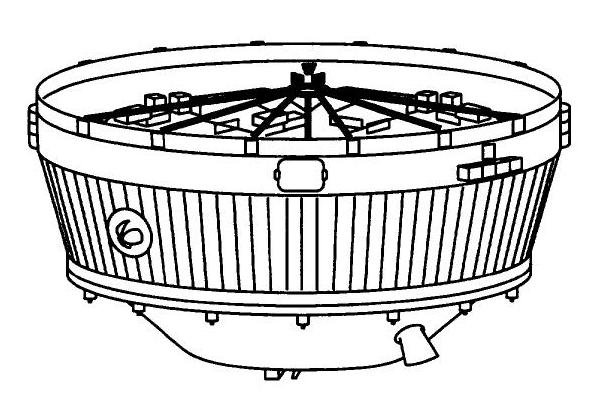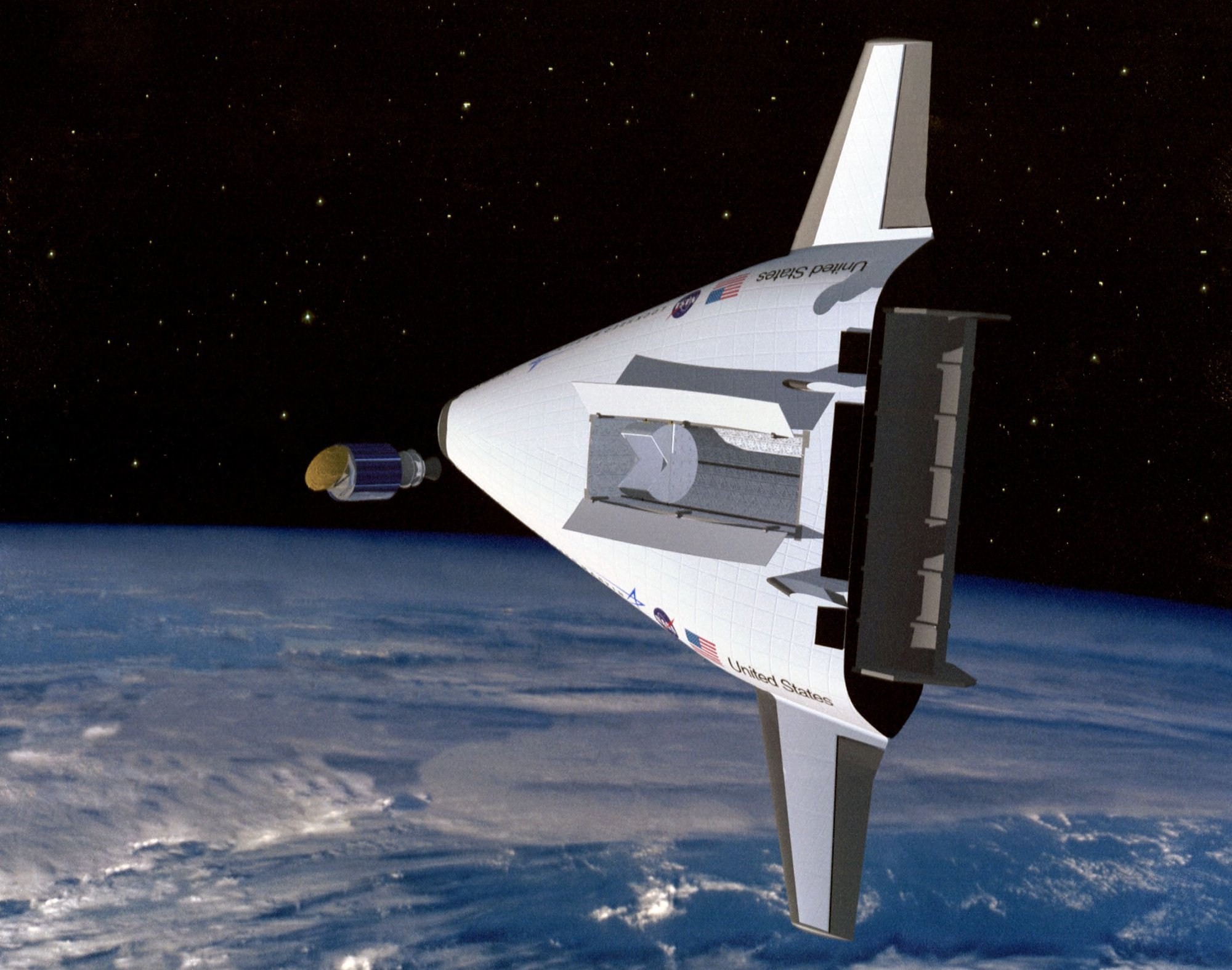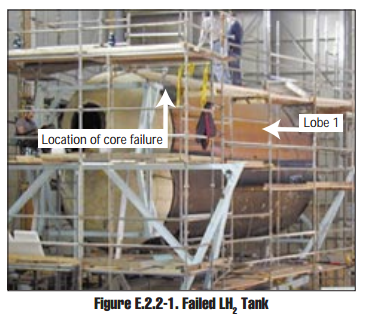|
HL-42 (spacecraft)
The HL-42 was a proposed scaled-up version of the HL-20 re-usable crewed spaceplane design, which had been developed from 1983 to 1991 at NASA's Langley Research Center but never flown. Like the HL-20 ("Horizontal Lander 20"), the HL-42 would have been launched into low Earth orbit mounted on top of a two-stage expendable rocket. At the end of the mission it would have re-entered and glided to a runway landing. The HL-42 was suggested as one possible successor to the Space Shuttle in the NASA Access to Space Study of 1994. In the end another alternative, a Single-stage-to-orbit design, was chosen for further development, and work on the HL-42 was abandoned. Background: NASA launch policy In the early 1980s it had been NASA policy to promote the use of the Space Shuttle for almost all launches, both civilian and military; only then, with Shuttle missions taking off almost every week, would the Space Shuttle program make economic sense. However, the ''Challenger'' disaster in 1986 ... [...More Info...] [...Related Items...] OR: [Wikipedia] [Google] [Baidu] |
Spaceplane
A spaceplane is a vehicle that can fly and glide like an aircraft in Earth's atmosphere and maneuver like a spacecraft in outer space. To do so, spaceplanes must incorporate features of both aircraft and spacecraft. Orbital spaceplanes tend to be more similar to conventional spacecraft, while sub-orbital spaceplanes tend to be more similar to fixed-wing aircraft. All spaceplanes to date have been rocket-powered but then landed as unpowered gliders. Four types of spaceplanes have successfully launched to orbit, reentered Earth's atmosphere, and landed: the U.S. Space Shuttle, Russian Buran, U.S. X-37, and the Chinese CSSHQ. Another, Dream Chaser, is under development in the U.S. As of 2019 all past, current, and planned orbital vehicles launch vertically on a separate rocket. Orbital spaceflight takes place at high velocities, with orbital kinetic energies typically at least 50 times greater than suborbital trajectories. Consequently, heavy heat shielding is required ... [...More Info...] [...Related Items...] OR: [Wikipedia] [Google] [Baidu] |
Single-stage-to-orbit
A single-stage-to-orbit (SSTO) vehicle reaches orbit from the surface of a body using only propellants and fluids and without expending tanks, engines, or other major hardware. The term usually, but not exclusively, refers to reusable vehicles. To date, no Earth-launched SSTO launch vehicles have ever been flown; orbital launches from Earth have been performed by either fully or partially expendable multi-stage rockets. The main projected advantage of the SSTO concept is elimination of the hardware replacement inherent in expendable launch systems. However, the non-recurring costs associated with design, development, research and engineering (DDR&E) of reusable SSTO systems are much higher than expendable systems due to the substantial technical challenges of SSTO, assuming that those technical issues can in fact be solved. SSTO vehicles may also require a significantly higher degree of regular maintenance. It is considered to be marginally possible to launch a single-stage- ... [...More Info...] [...Related Items...] OR: [Wikipedia] [Google] [Baidu] |
Centaur (rocket Stage)
The Centaur is a family of rocket propelled upper stages produced by U.S. launch service provider United Launch Alliance, with one main active version and one version under development. The diameter Common Centaur/Centaur III flies as the upper stage of the Atlas V launch vehicle, and the diameter Centaur V is being developed as the upper stage of ULA's new Vulcan rocket. Centaur was the first rocket stage to use liquid hydrogen (LH2) and liquid oxygen (LOX) propellants, a high-energy combination that is ideal for upper stages but has significant handling difficulties. Characteristics Common Centaur is built around stainless steel pressure stabilized balloon propellant tanks with thick walls. It can lift payloads of up to . The thin walls minimize the mass of the tanks, maximizing the stage's overall performance. A common bulkhead separates the LOX and LH2 tanks, further reducing the tank mass. It is made of two stainless steel skins separated by a fiberglass honeycomb. T ... [...More Info...] [...Related Items...] OR: [Wikipedia] [Google] [Baidu] |
Atlas II
Atlas II was a member of the Atlas family of launch vehicles, which evolved from the successful Atlas missile program of the 1950s. The Atlas II was a direct evolution of the Atlas I, featuring longer first stage tanks, higher-performing engines, and the option for strap-on solid rocket boosters. It was designed to launch payloads into low earth orbit, geosynchronous transfer orbit or geosynchronous orbit. Sixty-three launches of the Atlas II, IIA and IIAS models were carried out between 1991 and 2004; all sixty-three launches were successes, making the Atlas II a highly reliable space launch system. The Atlas line was continued by the Atlas III, used between 2000 and 2005, and the Atlas V which is still in use. Background In May 1988, the US Air Force chose General Dynamics (now Lockheed Martin) to develop the Atlas II vehicle, primarily to launch Defense Satellite Communications System payloads under the Medium Launch Vehicle II (MLV-II) program. Additional commercial and U.S. ... [...More Info...] [...Related Items...] OR: [Wikipedia] [Google] [Baidu] |
Delta II
Delta II was an expendable launch system, originally designed and built by McDonnell Douglas. Delta II was part of the Delta rocket family and entered service in 1989. Delta II vehicles included the Delta 6000, and the two later Delta 7000 variants ("Light" and "Heavy"). The rocket flew its final mission ICESat-2 on 15 September 2018, earning the launch vehicle a streak of 100 successful missions in a row, with the last failure being GPS IIR-1 in 1997. History In the early 1980s, all United States expendable launch vehicles were planned to be phased out in favor of the Space Shuttle, which would be responsible for all government and commercial launches. Production of Delta, Atlas-Centaur, and Titan 34D had ended. The ''Challenger'' disaster of 1986 and the subsequent halt of Shuttle operations changed this policy, and President Ronald Reagan announced in December 1986 that the Space Shuttle would no longer launch commercial payloads, and NASA would seek to purchase launches ... [...More Info...] [...Related Items...] OR: [Wikipedia] [Google] [Baidu] |
Low Earth Orbit
A low Earth orbit (LEO) is an orbit around Earth with a period of 128 minutes or less (making at least 11.25 orbits per day) and an eccentricity less than 0.25. Most of the artificial objects in outer space are in LEO, with an altitude never more than about one-third of the radius of Earth. The term ''LEO region'' is also used for the area of space below an altitude of (about one-third of Earth's radius). Objects in orbits that pass through this zone, even if they have an apogee further out or are sub-orbital, are carefully tracked since they present a collision risk to the many LEO satellites. All crewed space stations to date have been within LEO. From 1968 to 1972, the Apollo program's lunar missions sent humans beyond LEO. Since the end of the Apollo program, no human spaceflights have been beyond LEO. Defining characteristics A wide variety of sources define LEO in terms of altitude. The altitude of an object in an elliptic orbit can vary significantly along the orbit. ... [...More Info...] [...Related Items...] OR: [Wikipedia] [Google] [Baidu] |
VentureStar
VentureStar was a single-stage-to-orbit reusable launch system proposed by Lockheed Martin and funded by the U.S. government. The goal was to replace the Space Shuttle by developing a re-usable spaceplane that could launch satellites into orbit at a fraction of the cost. While the requirement was for an uncrewed launcher, it was expected to carry passengers as cargo. The VentureStar would have had a wingspan of , a length of , and would have weighed roughly 1000 t (2.2 million lb). VentureStar was intended to be a commercial single-stage-to-orbit vehicle that would be launched vertically, but return to Earth as an airplane. Flights would have been leased to NASA as needed. After failures with the X-33 subscale technology demonstrator test vehicle, funding was cancelled in 2001. VentureStar was essentially a bigger version of the X-33 but was not produced. The X-33 had ongoing problems meeting performance requirements for the carbonfibre hydrogen fuel tank. There were a number of ... [...More Info...] [...Related Items...] OR: [Wikipedia] [Google] [Baidu] |
Lockheed Martin X-33
The Lockheed Martin X-33 was a proposed uncrewed, sub-scale technology demonstrator suborbital spaceplane that was developed for a period in the 1990s. The X-33 was a technology demonstrator for the VentureStar orbital spaceplane, which was planned to be a next-generation, commercially operated reusable launch vehicle. The X-33 would flight-test a range of technologies that NASA believed it needed for single-stage-to-orbit reusable launch vehicles (SSTO RLVs), such as metallic thermal protection systems, composite cryogenic fuel tanks for liquid hydrogen, the aerospike engine, autonomous (uncrewed) flight control, rapid flight turn-around times through streamlined operations, and its lifting body aerodynamics. Failures of its 21-meter wingspan and multi-lobed, composite-material fuel tank during pressure testing ultimately led to the withdrawal of federal support for the program in early 2001. Lockheed Martin has conducted unrelated testing, and has had a single success after a ... [...More Info...] [...Related Items...] OR: [Wikipedia] [Google] [Baidu] |
Orbital Sciences X-34
The Orbital Sciences X-34 was intended to be a low-cost testbed for demonstrating "key technologies" that could be integrated into the Reusable Launch Vehicle program. It was intended to be an autonomous pilotless craft powered by a "Fastrac" liquid-propellant rocket engine, capable of reaching Mach 8 and performing 25 test flights per year. The X-34 began as a program for a suborbital reusable-rocket technology demonstrator. In early 2001, the first flight vehicle was near completion, but the program was ended due to budget concerns. Up to this point, the project had encompassed spending of just under $112 million: $85.7M from the original contract with designer Orbital Sciences, $16M from NASA and various government agencies for testing, and an additional $10M for Orbital Sciences to adapt its L-1011 carrier to accommodate the X-34. The program was officially canceled by NASA on March 31, 2001. The unpowered prototype had been used only for towing and captive flight tests ... [...More Info...] [...Related Items...] OR: [Wikipedia] [Google] [Baidu] |
Ariane 5
Ariane 5 is a European heavy-lift space launch vehicle developed and operated by Arianespace for the European Space Agency (ESA). It is launched from the Centre Spatial Guyanais (CSG) in French Guiana. It has been used to deliver payloads into geostationary transfer orbit (GTO) or low Earth orbit (LEO). The launch vehicle had a streak of 82 consecutive successful launches between 9 April 2003 and 12 December 2017. Since 2014, Ariane 6, a direct successor system, is in development. The system was designed as an expendable launch system by the ''Centre national d'études spatiales'' (CNES), the French government's space agency, in cooperation with various European partners. Despite not being a direct derivative of its predecessor launch vehicle program, it is classified as part of the Ariane rocket family. ArianeGroup is the prime contractor for the manufacturing of the vehicles, leading a multi-country consortium of other European contractors. Ariane 5 was originally intende ... [...More Info...] [...Related Items...] OR: [Wikipedia] [Google] [Baidu] |
Ariane 4
The Ariane 4 was a European expendable space launch system, developed by the ''Centre national d'études spatiales'' (CNES), the French space agency, for the European Space Agency (ESA). It was manufactured by ArianeGroup and marketed by Arianespace. Since its first flight on 15 June 1988 until the final flight on 15 February 2003, it attained 113 successful launches out of 116 total launches. In 1982, the Ariane 4 program was approved by ESA. Drawing heavily upon the preceding Ariane 3, it was designed to provide a launcher capable of delivering heavier payloads and at a lower cost per kilogram than the earlier members of the Ariane family. The Ariane 4 was principally an evolution of the existing technologies used, as opposed to being revolutionary in its design ethos; this approach quickly gained the backing of most ESA members, who funded and participated in its development and operation. Capable of being equipped with a wide variety of strap-on boosters, the Ariane 4 gaine ... [...More Info...] [...Related Items...] OR: [Wikipedia] [Google] [Baidu] |








